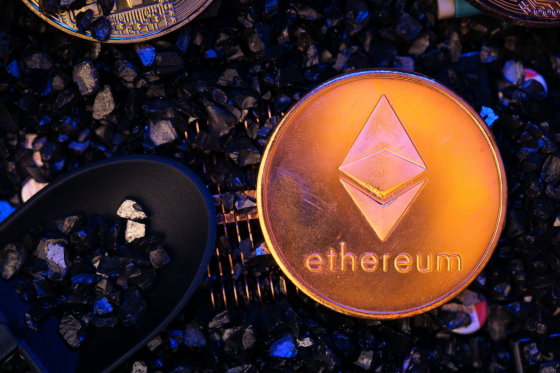What is the large-scale upgrade 'The Merge' that reduces the power consumption of Ethereum by more than 99%?

On September 6, 2022, Japan time,
How Ethereum's 'Merge' will slash its climate pollution - The Verge
https://www.theverge.com/2022/9/6/23339594/ethereum-merge-energy-pollution-proof-of-stake
Ethereum is a blockchain that serves as the foundation for various decentralized applications, and records cryptocurrency transaction records as blocks. Since this block is added by so many nodes, the blockchain needs a security system that prevents history tampering.
The system currently used in Ethereum is called “Proof of Work (PoW) ”, and a user is in charge of the calculation work necessary to prove data, and blocks are added by approving it. Since the user who performed the calculation is given virtual currency as a reward, the data approval work is called 'mining' as if it were mining ore, and the user who provides the calculation resource is called 'miner'.
The benefits of adopting proof of work include preventing one entity from having too much influence and making it harder to falsify transaction records. On the other hand, there is also the disadvantage that mining requires powerful hardware and a huge amount of electricity, as proof work becomes more difficult over time. As a result, some miners are investing in more powerful hardware and building dedicated mining centers, and a large number of miners are gathering in places where electricity rates are low.
Proof-of-work cryptocurrency mining will increase energy consumption and generate hardware e-waste. In recent years, Ethereum and Bitcoin, which also adopts proof of work, have been increasingly viewed as problems of energy consumption and environmental pollution due to mining. You can see the movement. However, these do not fundamentally solve the problem that blockchain consumes a lot of energy.
Bitcoin mining companies are moving forward with `` nuclear power generation '' as an environmentally friendly power source - GIGAZINE

What is being considered is the transition from proof of work to a new system called ' proof of stake (PoS) '. In Proof of Stake, a validator who approves a block contributes a certain amount of virtual currency as a 'stake', and block approval work is assigned according to the amount. Validators get virtual currency tokens in return for providing computational resources, but if there is fraud or a defect, they lose stake.
“The Merge” is the move from Proof of Work to Proof of Stake on the Ethereum blockchain. A stake of at least 32 ETH (about 7 million yen) is required to become an Ethereum validator.
An advantage of Proof of Stake is that the approval process does not require strong computational resources or a large amount of power. According to the Ethereum Foundation, if The Merge succeeds and completes the transition to Proof of Stake, it will reduce energy consumption on the Ethereum blockchain by 99.95%. According to Alex de Vries, who runs Digiconomist , a website that tracks the energy consumption of Bitcoin and Ethereum, if The Merge succeeds, 30 million to 35 million tons of carbon dioxide emissions will be reduced annually. . This is an amount comparable to the annual carbon dioxide emissions of Ireland and Switzerland, and has great significance as a measure against climate change.
The Merge consists of two stages, 'Bellatrix' and 'Paris'. The first phase of Bellatrix, which was completed on September 6th, is to integrate a proof-of-stake blockchain called “Beaconchain” into Ethereum so that blocks can be generated. In the second phase, Paris, the Proof of Work endorsement system will be suspended on the Ethereum blockchain, and the transition to Proof of Stake will be completed.

However, miners who have made capital investments in response to existing proof of work have voiced their opposition to the transition to proof of stake, which is not affected by hardware performance. Already, the movement to refuse to update software that adopts proof of stake and the movement to create forks using old proof of work are becoming active.
If these protests are successful and not enough validators join Ethereum after The Merge is complete, it poses a security risk to the blockchain. Leonardo Bautista Gomez, who has worked with the Ethereum Foundation to help develop the beacon chain, said, “If the number of validators is very low, attacks on the Ethereum network will be easier. We want to bring the participation rate of 100,000 validators closer to 99%.”
Related Posts:
in Software, Web Service, Posted by log1h_ik







